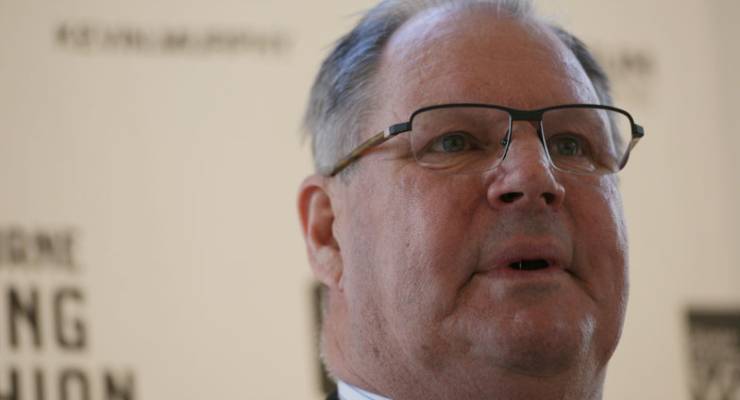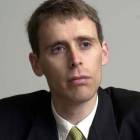
Has there even been more than 2135 candidates participating in a single election contest in Australia?
That’s the record tally lining up for a seat on Victoria’s 79 councils over the next three weeks.
It dwarfs the 1625 candidates who contested the recent federal election and also surpasses the 2079 candidates who participated in last month’s NSW local government elections.
With print media in terminal decline, mainstream media coverage of this democratic event has been particularly weak, so the candidates themselves have been helping build this online “call of the card” of council contests across Victoria.
Unlike NSW and Queensland, the major parties largely stay out of the fray, so the talent sorting is left to the people, which is particularly difficult where there are large fields.
The City of Wyndham, on Melbourne’s western fringe taking in Julia Gillard’s old seat of Lalor (see its recent opening of The Julia Gillard Library), has attracted a record field of 95 candidates, with The Age reporting that at least eight were supporting candidates put up by wealthy Labor councillor Intaj Khan.
The Liberals and Nationals have not endorsed any candidates, but the Greens went through formal preselection processes and are likely to lift their numbers from 18 to about 30, with most progress in the inner city. Labor is formally contesting only a handful of metropolitan councils, including Maribyrnong, Whittlesea, Monash and Yarra. You can spot the Greens from their @vic.greens.org.au email addresses on the candidate contacts pages, but good luck working out the affiliations of everyone else.
Port Phillip, which takes in much of Michael Danby’s federal seat of Melbourne Ports, is likely to go from no Greens to three out of nine. It is also one of only six remaining Victorian councils sticking with attendance voting on October 22. Darebin, which takes in David Feeney’s seat of Batman, should get an increase from one Green out of nine to three or four.
The Liberals are taking the most interest in City of Monash, where they are attempting to overthrow Labor strongman Geoff Lake, who has controlled the council for 13 years. Liberal candidates have spent more than $100,000 on the campaign, including distributing this dirt sheet attacking Geoff Lake for getting disendorsed by Kevin Rudd shortly before the 2013 election. The Sunday Herald Sun copped a hiding in the Press Council over its 2013 Lake attack, and Labor has formally expressed regret for disendorsing him.
In City of Melbourne, which has a pro-business gerrymander, the Greens are certain to retain their two councillors, Cathy Oke and Rohan Leppert, who have effectively pulled off the first ever successful Green-Liberal Coalition these past four years, although they effectively deny it by their preferencing decisions.
There are seven candidates in the lord mayoral contest, and Liberal Robert Doyle has only been able to draw preference support from the two unofficial Labor tickets, which will finish sixth and seventh.
The other four more credible challenging candidates — Green Olivia Ball, Ken Ong (planning chair and a successful businessman and Liberal member), pollster Gary Morgan and former federal MP Phil Cleary — have all conspired to preference each other ahead of Doyle, who will need to retain a primary vote above 40% to win.
[Poll Bludger: how Moore, the merrier, thumped rivals in mayoralty race]
I’m tipping the lord mayor won’t prove as popular as Clover Moore, but will get back with a 56-44 two-party preferred victory over the Greens. Ong, who is spending $100,000 of his own money and running with former Pacific Brands CEO Sue Morphet, will finish a credible third.
If anything, the separate City of Melbourne council election is more interesting than the lord mayoral race. Team Doyle currently controls 5 of the 11 votes and is trying to emulate Clover Moore’s recent City of Sydney effort by seizing majority control. As an independent who has leveraged the balance of power to achieve sweeping governance reforms, my whole pitch is to retain a popular lord mayor but prevent him taking control.
To burnish his centrist credentials, Doyle has recruited academic and Sky News commentator Nicholas Reece, a former Victorian ALP state secretary and senior staffer to Julia Gillard and John Brumby, as No. 2 on his council ticket, relegating incumbent female councillors Susan Riley and Beverley Pinder-Mortimer.
While the Green vote will rise in Melbourne, Labor is in disarray. There are six different City of Melbourne council tickets with a Labor member involved, but only one of them, Robin Matthews, has mentioned this in the 250 word candidate statement that was included in the postal ballot pack.
Many of them are not preferencing each other and may face the threat of expulsion under the quirky ALP rule that requires all party members to preference each other first in local council elections, even if Labor is not formally contesting. This rule usually leads to about 20 expulsions after each Victorian council election.
After the union movement, local government is the largest source of federal and state MPs, as this growing list demonstrates.
We’re also seeing a growing trend of former councillors attempting a comeback in Victoria, with our tally at 63 so far.
We’ve even got the former Labor federal member for Deakin in Melbourne’s east, Mike Symon, attempting to secure a spot on City of Maroondah, which might explain why his conservative successor, Michael Sukkar, is backing so many competing Liberal candidates for control of that council.
Victoria has unique laws that ban federal and state political staffers (political professionals, in other words) from serving on councils, yet it is perfectly fine for developers, real estate agents and council employees to hold office. Work that one out!
* Cr Stephen Mayne is chair of the finance and governance committee at City of Melbourne and was not paid for this item.








Hi Stephen you referenced a press council adjudication in this article but the link you provided stating the decision clearly upholds the main article relating to the abuse of the wheelchair bound woman which was published on the front page of the Herald Sun in August 2013. How can you justify claiming that the “Herald Sun copped a hiding in the Press Council”?